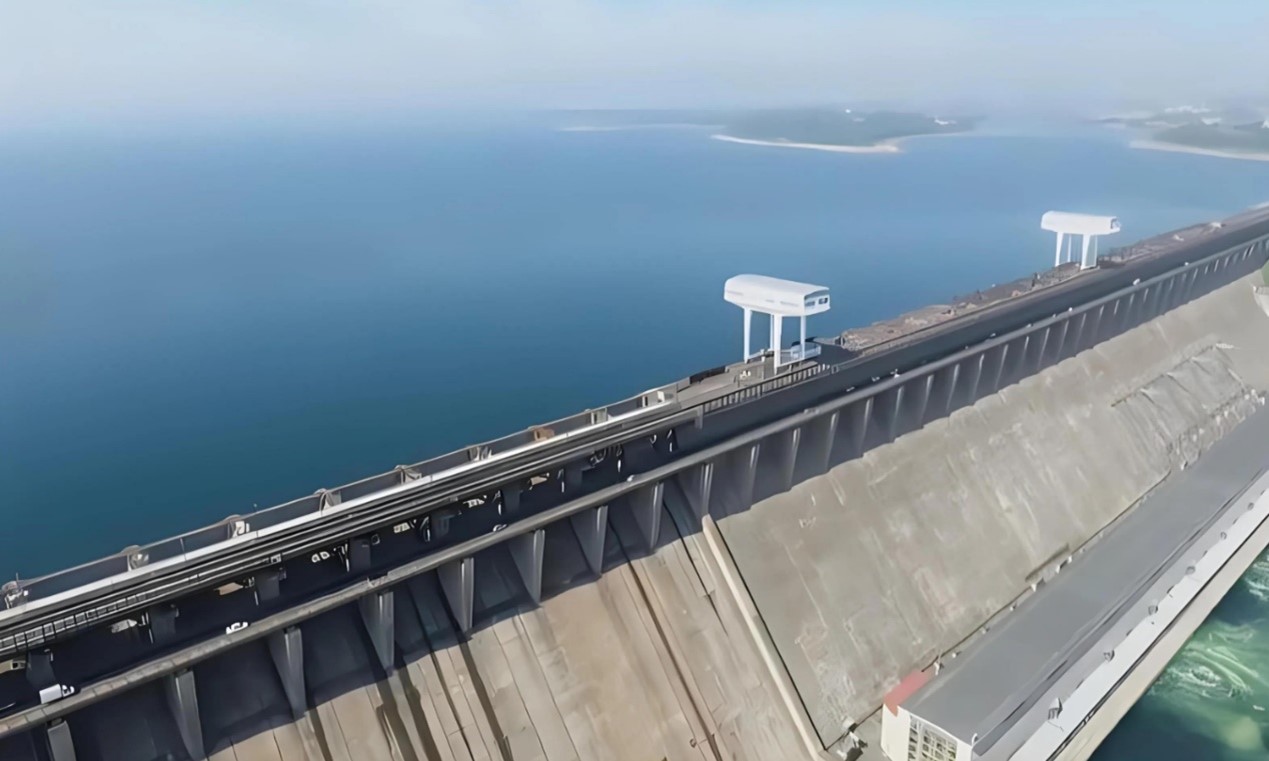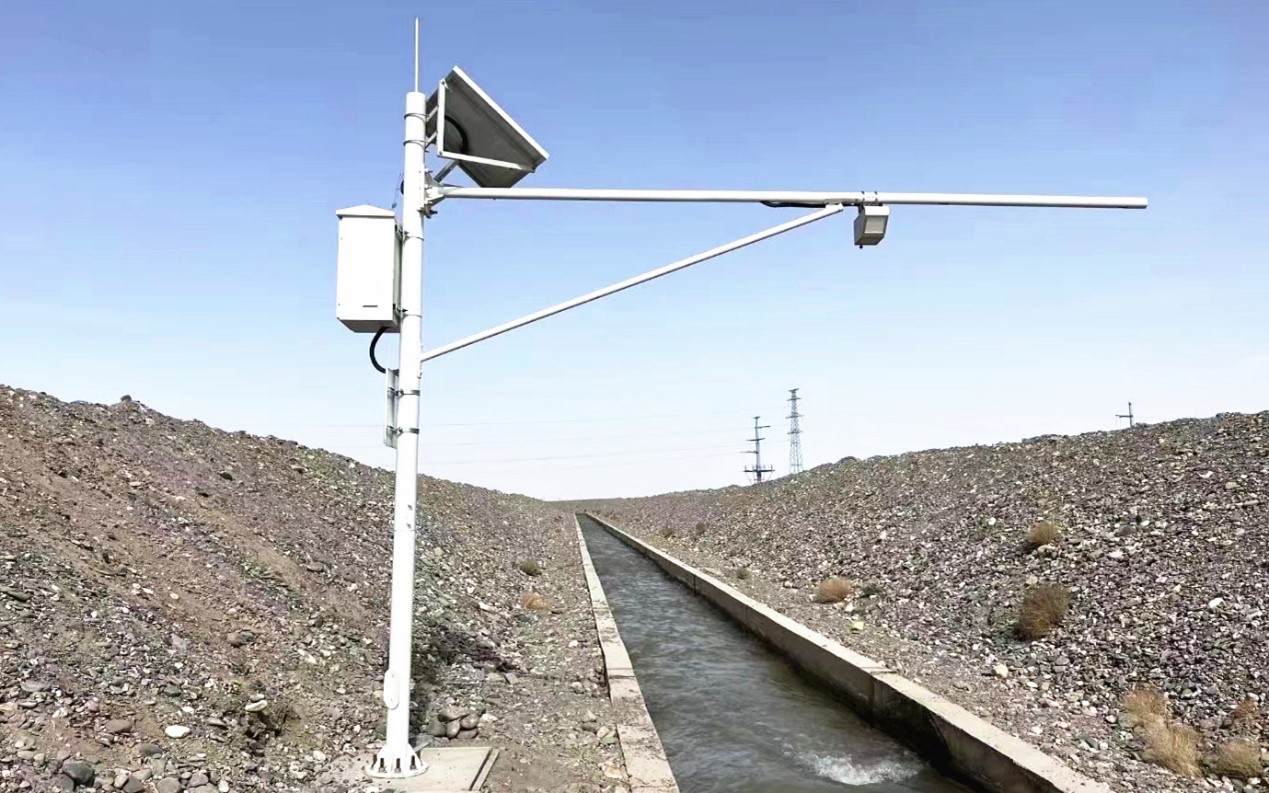How river flow sensor play an important role during flood season

During the flood season, floods are like ferocious beasts that can break through defenses at any time, posing a huge threat to people’s lives, property, and the ecological environment. In this battle against floods, river flow sensors, especially radar sensors, play a crucial role like agile “guardians” on multiple key battlefields.
1、 The ‘Eagle Eye’ for precise monitoring and real-time warning
The radar river flow sensor is like having a pair of sharp “eagle eyes”, which can accurately perceive the every move of river flow in complex and changing flood season environments. It uses the reflection principle of electromagnetic waves to emit high-frequency electromagnetic waves towards the water surface. When the electromagnetic waves encounter objects or fluctuating water surfaces in the water flow, they will be reflected back. The sensor can accurately calculate the velocity and flow rate of the water flow by analyzing the frequency, phase, amplitude and other parameter changes of the reflected waves.
Compared to traditional contact sensors, radar sensors have significant advantages. During the flood season, there are often a large number of branches, debris, and even garbage floating in the river. Traditional sensors are easily entangled and damaged by these foreign objects, leading to measurement interruptions or increased errors. The radar sensor adopts non-contact measurement, completely avoiding these troubles, and is stably installed on the riverbank, bridge or pole frame to monitor the water flow from afar. No matter how turbulent the water flow is or how chaotic the river surface is, it can continuously and stably output accurate data.
These real-time collected data are quickly transmitted to hydrological monitoring centers and flood control command departments through advanced communication technologies such as 4G, 5G, or satellite communication. Once the data shows that the river flow approaches or exceeds the preset warning threshold, the warning system will immediately activate. Through diversified channels such as broadcasting, text messages, and intelligent warning apps, flood warnings are issued to residents, enterprises, and institutions in the basin, informing everyone that floods are imminent and reserving valuable time for personnel transfer and material rescue, building the first line of defense for life and property safety.

2、 Assist in reservoir scheduling and serve as a ‘think tank’ to balance the forces of water and fire
As a key hub for flood control, reservoirs shoulder a significant mission during the flood season. They not only need to intercept and store floods to reduce peak flow, but also take into account subsequent water supply, power generation, and other needs. The radar river flow sensor plays the role of a “think tank” for reservoir scheduling in this process.
High precision radar flow sensors are deployed at key inlet points such as multiple tributaries and main stream intersections upstream of the reservoir. They constantly monitor the incoming water flow and continuously transmit data to reservoir management personnel. Management personnel use professional scheduling models to conduct comprehensive analysis based on the current water level, storage capacity, dam safety status, and rainfall trends in weather forecasts of the reservoir.
When the radar sensor detects a rapid increase in upstream water flow and the weather forecast shows continued heavy rainfall, the reservoir needs to open the flood discharge gate in advance to release storage capacity in an orderly manner to cope with the upcoming surging floods. On the contrary, if it is detected that the flow rate is increasing steadily and the expected rainfall is decreasing, the flood discharge intensity can be appropriately controlled to ensure the water storage function of the reservoir.
During the flood discharge phase, radar sensors installed in the spillway and tailwater channel are equally crucial. They monitor the flood discharge flow in real-time to ensure that the flood discharge process is strictly carried out according to the predetermined plan, preventing secondary disasters such as excessive erosion of the downstream river channel and bank slope collapse caused by uncontrolled flood discharge flow. By comparing the flow data of the upstream and downstream of the reservoir before and after flood discharge, the effectiveness of this flood control operation can be accurately evaluated, providing a strong basis for optimizing the operation strategy in the future.
3、 Ensuring the safety of waterways and serving as a beacon for guiding ships
During the flood season, the drastic changes in river flow velocity and volume make navigation in waterways extremely dangerous. The radar river flow sensor is like a bright “lighthouse”, emitting light and heat to ensure the safety of the waterway.
At the throat of the waterway, such as port entrances and exits, near ship locks, bends, and shallow areas, radar flow sensors continuously monitor the water flow conditions 24 hours a day. For ship drivers, these real-time water flow information are like a compass on the sea. When the flow velocity is too fast and the flow rate increases dramatically, the navigation resistance of the ship increases significantly, and the difficulty of maneuvering increases sharply, making it highly prone to loss of control, grounding, or collision accidents. With the help of the electronic display screen on the shore of the channel and the onboard intelligent terminal, the pilot can instantly obtain the accurate water flow data from the radar sensor, adjust the speed and heading in advance, and flexibly choose a safer channel to drive.
The waterway management department can quickly carry out targeted maintenance of the waterway based on the data feedback from radar sensors. If it is detected that a certain section of the waterway has been eroded by water flow, causing deformation of the riverbed and shallowing of the water depth, dredging operations should be arranged immediately; Discovering that the turbulent water flow at the bend is not conducive to the passage of ships, temporary navigation signs should be added in a timely manner or flow restriction measures should be taken to ensure that the waterway remains unobstructed during the flood season, and the lifeline of water transportation can be stabilized.
4、 A ‘staff’ providing decision-making support for flood control and emergency rescue
In the life and death battlefield of flood control and rescue, every second is related to life and death, and every decision is crucial. The radar river flow sensor is like a resourceful “staff officer” at this moment, providing key decision-making support for emergency command personnel.
When there is a sudden danger such as a breach of the embankment or flooding, the rescue team needs to first understand the details of the river flow near the breach and flooding area when rushing to the front line. Radar flow sensors can provide accurate flow velocity and flow information in the first time, helping rescue personnel determine the magnitude of flood impact, and based on this, allocate rescue materials reasonably, such as determining the size, weight, and quantity of sandbags, as well as planning and reinforcing construction plans for dams and plugging breaches.
If the water flow at the breach is turbulent and astonishing, large mechanical equipment must be called upon to quickly deploy heavy sandbags, steel cages, etc. for strong sealing; If the flow rate is relatively gentle, manpower can be organized to efficiently advance using conventional emergency measures. And as the rescue work gradually unfolds, the data continuously fed back by radar sensors is like a “battle situation” report, verifying in real time whether the rescue measures are effective. If it is found that the traffic has not been effectively controlled, the commanding personnel can quickly adjust tactics, reallocate forces, and ensure that the rescue work is moving towards victory.
5、 Assist in ecological protection and serve as the ‘guardian’ of river life
Although floods during flood season are a natural phenomenon, uncontrolled flow can easily cause devastating impacts on river ecosystems. Radar river flow sensor have become the guardians of river life, silently working in the field of ecological protection.
River ecosystems operate according to specific laws, and the reproduction and habitat of numerous aquatic organisms are closely linked to specific water flow conditions. For example, some fish species need to migrate and lay eggs within specific flow rates and flow ranges. Radar flow sensors provide detailed data for ecologists by continuously monitoring river flow over a long period of time, helping them grasp the water flow patterns at these key ecological nodes.
Before the flood season, ecological fishways can be carefully set up in advance in the fish migration channel based on radar sensor data, and the water flow conditions of the fishways can be optimized in real time to ensure the smooth migration of fish; Strengthen protective facilities in advance for wetland and riparian ecological areas that are susceptible to flood impacts, and protect biological habitats from invasion.
At the same time, floods carry a large amount of sediment and pollutants into rivers. By combining the flow changes monitored by radar flow sensors with water quality monitoring data, the impact of floods on river water quality can be analyzed in depth, providing accurate basis for subsequent water environment management and promoting the restoration of ecosystems as soon as possible after the flood season.
